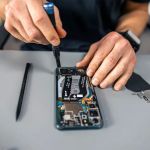- Introduction: Why Booting from USB on a MacBook Air is Important
- Preparation: What You Need Before Booting from USB
- Step-by-Step Guide to Booting from USB
- Common Issues When Booting from USB and How to Solve Them
- Additional Tips for Smooth Booting Experience
Introduction: Why Booting from USB on a MacBook Air is Important
Booting from USB is a powerful tool for MacBook Air users. Whether you're installing a fresh version of macOS, troubleshooting system errors, or running diagnostic tools, the ability to boot from USB can be a lifesaver. This guide will walk you through the process of booting your MacBook Air from a USB drive, step by step, ensuring a seamless and successful experience.
Preparation: What You Need Before Booting from USB
Before attempting to boot your MacBook Air from a USB drive, it’s important to ensure you have everything you need for a smooth process. Here’s what you’ll require:
- A bootable USB drive with the macOS installer or diagnostic tools on it. You can create this using Apple's Disk Utility or use a pre-configured USB drive.
- Access to your MacBook Air’s Startup Manager. You will need to use this tool to select the USB as your boot device.
- Stable power supply or a fully charged battery, as the process can take time.
Step-by-Step Guide to Booting from USB
Now that you’re prepared, follow these simple steps to boot your MacBook Air from USB:
- Step 1: Plug your bootable USB drive into your MacBook Air's USB port.
- Step 2: Shut down your MacBook Air completely.
- Step 3: Power on your MacBook Air while holding down the Option key (⌥) on your keyboard. This will bring up the Startup Manager.
- Step 4: In the Startup Manager, you will see icons for your internal drive and the USB drive. Use the arrow keys to select the USB drive and press Enter.
- Step 5: Your MacBook Air will now boot from the USB drive. You can follow the on-screen instructions to install macOS or run diagnostic utilities, depending on what is on your USB drive.
Common Issues When Booting from USB and How to Solve Them
While booting from USB is a straightforward process, you may encounter some issues. Here are some common problems and their solutions:
- USB Not Showing Up in Startup Manager: Make sure the USB drive is properly formatted and bootable. Reformat the drive using Disk Utility if necessary and recreate the bootable drive.
- Incorrect macOS Version: Ensure the macOS version on your USB drive is compatible with your MacBook Air. Check Apple's website for compatibility details.
- USB Port Not Recognized: If the USB port is not recognizing the device, try using a different port or test the USB drive on another computer to rule out any hardware issues.
Additional Tips for Smooth Booting Experience
Here are some extra tips to help make the process even smoother:
- Ensure your USB drive has a fast read/write speed: Using a high-quality USB drive will make the booting process faster and more reliable.
- Check your Mac’s firmware: If your MacBook Air’s firmware is outdated, it may not recognize newer USB drives. Make sure your system is up to date.
- Have a backup: Always back up important data before using a USB to install or repair your system.




























